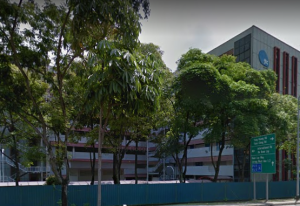JTC Q2 2020 Industrial property statistics showed this sector is most resilient across the property sectors (retail, office, hotel, residential), amid the global coronavirus (COVID-19) pandemic
The Singapore industrial property market emerged one of the most resilient across the property sectors (retail, office, hotel, residential), amid the global coronavirus (COVID-19) pandemic, as seen by continued warehouse demand supported by the accelerated adoption of e-commerce and government’s stockpiling of essential goods.

Ms Tricia Song, Head of Research for Singapore at Colliers International, commenting on the JTC Q2 2020 Industrial property statistics said, “(despite the resilience) overall industrial rental and price declines were more pronounced in Q2 2020 than in Q1 2020, capturing the ground sentiments and impact of COVID-19 Circuit Breaker measures which started on 7 April 2020. With the rapidly evolving COVID-19 situation, the industrial sector is likely to experience continued pressures on rents and prices, as with other sectors.”
She added that the JTC Q2 2020 Industrial property statistics showed “Singapore all-Industrial property market rents declined 0.7% quarter-on-quarter (QOQ) in Q2, dragged by single-user factory.”
JTC Q2 2020 Industrial property statistics showed business parks held up best but still declined 0.2% QOQ. Despite the weakness in rents, overall occupancy rate, however, rose marginally to 89.4% from 89.2%. Meanwhile, prices of industrial properties saw a decline of 1.1% QOQ, attributing largely to the 1.5% QOQ decline seen in multi-user factories.
Overall, Colliers International is cautious about Singapore industrial market’s outlook for this year, and forecast the general industrial market to remain weak in 2020.
Analysing the JTC Q2 2020 Industrial property statistics, Colliers suggested that the business park and high-specs segments could be more resilient, benefiting from Technology sector. It added that the JTC Q2 2020 Industrial property data could lend support to the view that warehouses may see support from the rise in e-commerce driving demand for logistics services, and are also well-positioned for any economic rebound.
“Rents and Occupancy Rate
The All-Industrial rental index declined at an increasing rate, registering a -0.7% QOQ growth, dragged largely by single-user factory (-1.0%) and warehouse (-0.7%). This came after a 0.1% decline in Q1 2020. This also marks the highest quarterly decline since Q3 2017, and brings the All-Industrial rental index to a level at 14.2% below the peak in Q2 2014.
However, overall occupancy rates improved 0.2 percentage point (ppt) to 89.4% in Q2 2020 from 89.2% in Q1 2020, mainly due to an 0.8 ppt increase in warehouse space; more space was leased due to stockpiling and storage during the quarter. Other segments saw a decline in occupancy levels, with business parks falling the most.
Factory
The single-user factory segment saw rents declining 1.0% QOQ which helped pushed up occupancy by 0.4 ppt to 91.1% (+0.4 ppt). While rents of multi-user factories held up slightly better at -0.5% QOQ, occupancy declined by 0.4 ppt to 87.5%. All planning regions saw a decline in rents, with the worst decline seen in the East at -2.1% QOQ.
Business Park
Business Park rents held up best among all segments, with only a marginal decline of 0.2% QOQ in Q2 2020. That said, this is the first rental decline seen for business parks since Q4 2018, as the global COVID-19 pandemic dampened business sentiment and leasing activities in business parks and high-spec spaces. Occupancy rate also declined by 0.7 ppt QOQ to 85.2% as businesses paused expansion activities and net new demand remained negative for the second consecutive quarter.
Warehouse
Warehouses saw a surge in net new demand to 1.3 million sq ft from -125,000 sq ft in Q1 2020, as the pandemic resulted in national stockpiling of essential goods and accelerated e-commerce growth. Lower rents (-0.7% QOQ) in Q2 2020 drove occupancy up by 0.9 ppt to 88.3%.
Prices
The All-Industrial price index fell 1.1% QOQ in Q2 2020, dragged by the multi-user factory segment which saw a -1.5% QOQ decline, while single-user factory also witnessed a -0.6% QOQ decline.
We note that the price index for multiple-user factory has not seen an improvement for seven consecutive quarters. Prices in all planning regions fell in Q2 2020, with the West and North region seeing the largest drop at -4.0% QOQ and -3.5% QOQ respectively.
Future Supply
Only 0.2 million sqm (approx. 2,152,782 sq ft) of new industrial space was completed in Q2 2020 due to the impact of COVID-19 Circuit Breaker measures on the construction sector. For the next two quarters, another 1.3 million sqm (approx. 13,993,083 sq ft) of industrial space are scheduled to be completed, of which: 39% is in multiple-user factory, 39% in single-user factory, 20% in warehouse and 2% in business park.
This is a sharp reduction from the previously expected 2.1 million sqm (approx. 22,604,212 sq ft) of stock to be completed in 2020 as reported in Q1 2020. Further delays are expected as project owners and contractors adjust to meet BCA’s Safe Restart requirements.
Beyond 2020, overall industrial supply that was previously expected to come through in 2021, are now pushed out to 2023. Based on JTC’s forecasts, average net industrial supply in 2021-2022 is now 13.2 million sq ft p.a. versus 2023’s 4.9 million sq ft.
Macro environment
Based on advance estimates from the Ministry of Trade and Industry (MTI), Singapore’s Q2 GDP contracted by 12.6% year-on-year (YOY) and 41.2% QOQ (seasonally adjusted annualised) — the worst decline since the Global Financial Crisis.
The manufacturing sector grew by 2.5% on a YOY basis in Q2 2020, slower than the 8.2% growth in the previous quarter. Growth during the quarter was primarily due to a surge in output in the biomedical manufacturing cluster.
On the other hand, weak external demand and workplace disruptions during the Circuit Breaker period weighed on output in the chemicals, transport engineering and general manufacturing clusters. On a QOQ seasonally-adjusted annualised basis, the manufacturing sector shrank by 23.1%. This is a sharp reversal from the 45.5% expansion in the preceding quarter.
Oxford Economics, as of May 14 2020, has downgraded Singapore’s 2020 GDP forecast to −6.0% as the Circuit Breaker measures were extended by one more month. Assuming the pandemic does not come back in waves, either domestically or globally, it is forecasting that Singapore is likely to see a relatively strong growth rebound in H2 2020 and 2021 (+7.5%), thanks to the unprecedented fiscal stimulus packages and monetary easing.
Indeed, there are early signs of a recovery in global demand as non-oil domestic export (NODX) and non-oil import volumes rebounded strongly, both recording positive annual growth in June, as lockdowns eased globally.”
“JTC Q2 2020 Industrial property data suggested that the rapidly evolving COVID-19 situation is expected to weigh on the industrial property market,” said Ms Song.
“As the impact across manufacturing sectors is uneven, we expect overall demand for general factory space to remain weak in the near term. Industrialists probably paused their expansion plans and are recalibrating space requirements. While a delay in supply completions provides some relief to what would have been potentially a supply glut, factory rents are likely to decline more than other segments in 2020, especially for older spaces in remote locations.
While warehouses have benefited from increased e-commerce and stockpiling during COVID-19, we note that there is still ample available stock. As vacancy continues to improve below its current 11.7% level, we expect warehouse rents to stabillise in 2020 and to recover from 2021 onwards.
For business park and high-spec segments, rents are likely to be more resilient than other segments supported by the relative resilience of the Technology, Media and Telecommunications (TMT) sector during this COVID-19 pandemic. We expect rents for business park and hi-specs segment to rise marginally by the end of 2020 when business confidence gradually returns. In the longer term, newer and centrally-located business parks and high-spec industrial spaces should enjoy healthy demand due to their premium specifications and limited supply.
In our recent Resilience and Rebound Ranking report, the manufacturing and technology sectors rank top for faring well historically based on past crises, as well as for future earnings growth. This bodes well for industrial space – particularly business parks, logistics spaces and data centres. These benefit most from increased R&D, e-commerce adoption, and increased data broadband usage respectively.
In the longer term, COVID-19 could bring about changes in the global manufacturing landscape as governments around the world consider onshore manufacturing of certain strategic products.”






